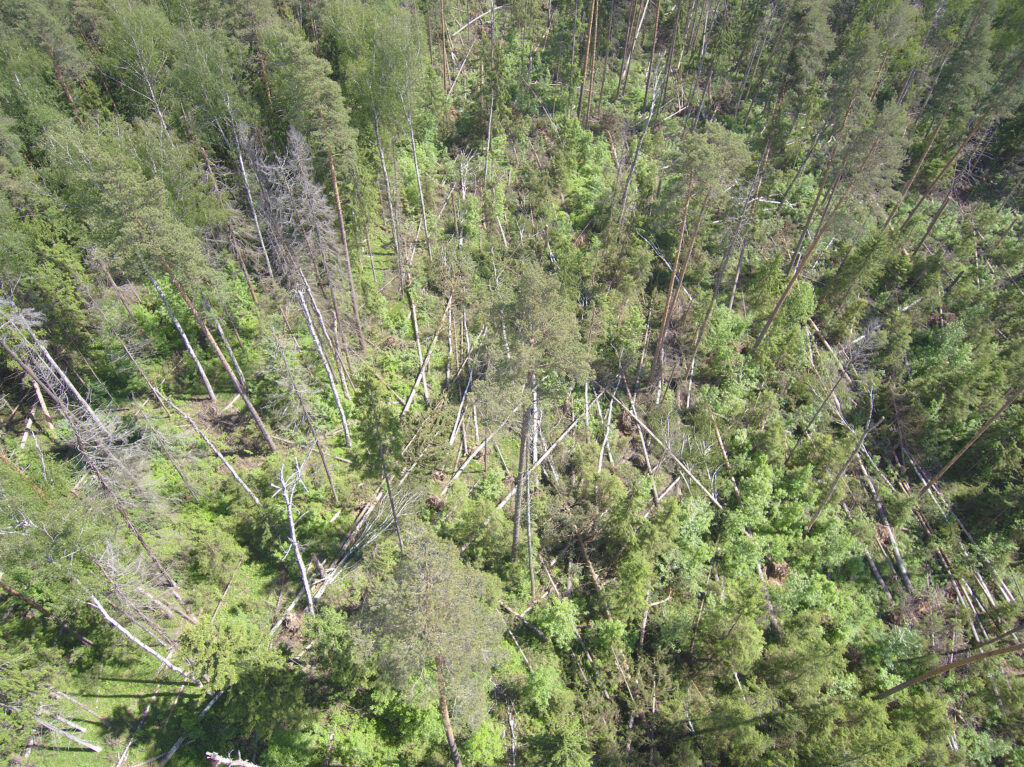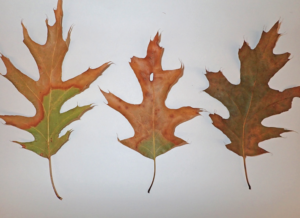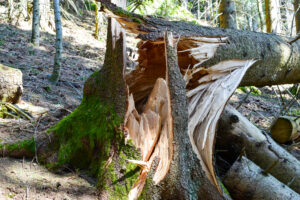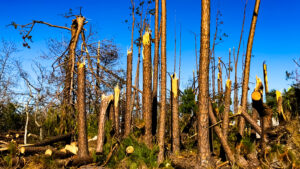
Getting to Know Your Forest Health Team: Paul Cigan and Harsh Weather Effects on Woodlands
By Denise Thornton
Weather has a huge influence on all vegetation. It dictates what species will grow, how they grow, and their productivity. The time of year can affect how to respond to severe weather. “We have to consider the seasonality of storms because the differing after-effects depend on the time of year when they hit,” says Paul Cigan, DNR Forest Health Specialist.
When trees are injured in a wind storm, they can become susceptible to infestation or infection from insects or disease — depending on the season. “A primary instance is oak wilt. A storm that breaks off limbs or stems can have a much bigger impact from April to July when oak wilt is spread. And it can have a much bigger impact than just damaging or killing an individual tree because oak wilt can spread by root grafts to neighboring trees, causing the event to become lingering and persistent.”

Cigan suggests that land owners can minimize damage to injured oaks in the April-July period by cutting broken branches back to the stem and applying a pruning sealant or latex paint onto the final cut within a day or two of the storm. “These are not products we would typically recommend using on a tree because they are toxic to the tree and interfere with proper healing, but in the case of oak wilt that would kill the tree, a little harm from sealant is justified. They create a physical barrier over the wound to prevent the spores that beetles carry from inoculating that tree. This is most commonly recommended for individual yard trees.”
The same holds true if an oak is broken off completely. “If there are any oaks within 80 feet of the remaining oak trunk, cut it down low and put the sealant on the trunk. That stump could become infected and is still linked into the rest of the oaks through root grafts,” Cigan says.
It’s a different issue when storms knock down a lot of trees. “That puts a lot of fresh, green wood on the ground which is available to a variety of pests. For pine trees, one of the biggest problems is bark beetles. Bark beetles go after not only a damaged tree, which is stressed and more susceptible to them, but also the wood that has been knocked down can provide a breeding ground to build up their population making them more aggressive and damaging to any remaining pines.”

A lot of broken wood may be salvageable as pulp wood or dimensional lumber, but when fungi and bacteria move into the wood, they can quickly cause degradation and discoloration. “After six weeks (particularly during the growing season) pine, either red or white, can start to stain and become less valuable,” says Cigan.
If we get wind storms, especially with hail from June to August, (particularly Red pine, Jack pine and Scots pine) become very susceptible to diploid shoot blight. “The winds break off branches, and hail will break the bark open on a much more intense level causing large, blunt-force contusions. When you have all this exposed, living tissue, it can intercept diploidia spores floating in the air. They will colonize these wounded sites, and they will start to cut off the flow of nutrition and water which cause the branches to die quickly. I’ve seen almost all the needles on a 40-acre forest turn brown.”
Cigan does not recommend that pine injuries be covered with any protectant. It’s not enough to stop diploidia.
Another issue affecting storm-damaged pine is heterobasidion root disease (HRD). “It can colonize open wounds. If you are in an area where HRD is common, any damage to red pine is worth considering preventative treatments against HRD.
We recommend you apply a fungicide such as Rot-Stop or Cellu-Treat to any injured stumps. This includes 26 Wisconsin counties, particularly south of State Highway 29.”
Often in the latter part of April and into May, many land owners want to get back to their summer cottage and do spring cleanup after any winter storm damage, but Cigan warns, If you’ve got an oak that was damaged, be critically alert to protect any cuts you make during April through July with sealer. If you hire a company to clean up from a winter storm, and if they work during April to July, it’s important to stay alert during cleanup to avoid any additional injury to neighboring oaks.
Generally the time to be on guard is during the growing season between June and August, says Cigan. “That is when oak wilt is on the scene, when bark beetles are active, and when HRD is more active.”
“For example, a wind storm that blows down 40 acres of red pine may have a very different urgency if it happens in the middle of June, making that pine available as a breeding source during the beetle’s reproductive period,” Cigan says. “And as for trees partially injured, uprooted or leaning over — those trees are a hazard. Leaving them behind can provide more food and resources for bark beetles and HRD.”

Drought and water shortages during the growing season are another important issue for tree health. “A droughty tree is more susceptible to caterpillars, bark beetles and root diseases,” says Cigan. “We tend to see a higher incidence of insect outbreaks, particularly caterpillars such as tent caterpillar and spongy moth then. There is also an oak borer that tends to follow drought.” For yard trees, water them with a hose weekly. “Water until the soil is no longer infiltrating,” Cigan advises.
On the other end of the spectrum, there is no way to mitigate standing water. “Trees need to breathe. They are taking in oxygen to break down the carbon sugars they produce in the root system. It’s called dark respiration, and it usually happens at night.” Pines next to lakes whose level has raised may have their root system inundated with water. “We see bark beetles starting to go after those trees,” Cigan says. “Pine Engraver Beetle is the main one. Trees are so stressed out that they can start dying.”
Weather events can not be avoided, but quick, a thoughtful response to storm damage, whenever possible, will make a difference to how your stand recovers in the following years.
